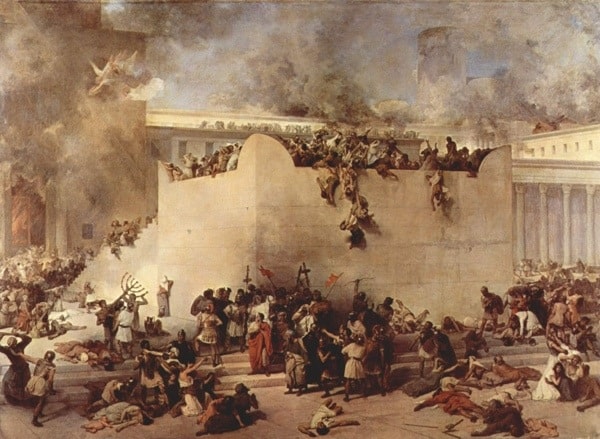When Jesus walked along the dusty roads of Judea and Galilee, the Jewish people had a temple in Jerusalem. But today, there isn’t one.
So what happened to this temple?
First, a bit of background: The temple in the time of Jesus was the second Jewish temple. The Babylonians had burned the first temple in 586 B.C. It was seventy years or so after the destruction of the first temple that a second temple was rebuilt and dedicated (Ezra 1; 4—5).
Five hundred years after the dedication of the second temple, King Herod the Great began renovating this structure. The renovations continued even after Herod died and expanded this temple into one of the grandest and most magnificent structures in the Roman Empire. At the time when Jesus ran salespeople and moneychangers out of the temple courts, renovations had been going on for forty-six years (John 2:20).
(A sidenote for those fans of Indiana Jones who may be wondering about the fate of the ark of the covenant: This temple apparently lacked an ark; according to the Jewish historian Josephus, when a Roman general entered the holy of holies, nothing was there, Bellum Judaicum, 5:5:5; 7:5:5-6.)
But what happened to the second temple?
In A.D. 70, the Romans destroyed this temple.
In A.D. 66, Vespasian—once exiled by the Emperor Nero for drowsing during one of the emperor’s interminable poetry recitals—responded to a Jewish rebellion by beginning his campaign in Galilee. He worked his way south, fighting alongside his son Titus. This campaign would eventually bring father and son to the gates of Jerusalem; later, these events would contribute to turning Vespasian and Titus into emperors of the Roman Empire.
To understand more about what happened in Jerusalem in A.D. 70, read this article from Christian History magazine “Not One Stone Left Upon Another.”
To gain a glimpse of Vespasian’s campaign in Galilee that led up to the fall of Jerusalem, you might want to take a look at these two videos—but please be cautioned that there is quite a bit of brutality and some vulgarity in them:
30 Days through Church History: Day 4

